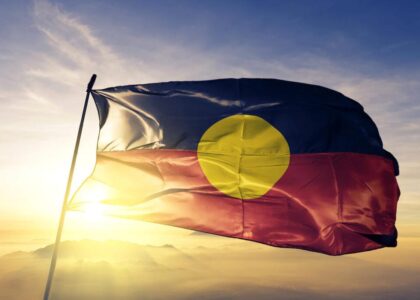CSR And Social Procurement, Are They The Same?

Many organisations recognise the value of social procurement and want to do more. However, often social procurement is confused with corporate social responsibility. What is the difference, and how is each used to win government business?
As social procurement continues to gain momentum, government suppliers are faced with the challenge of embedding business practices that align with these objectives. This is leading to a demand for organisations to design and implement their own social procurement framework.
Some organisations (particularly the larger ones) have released public documents on their websites setting their social and sustainable procurement strategies. While we applaud these efforts to establish corporate social procurement frameworks, we’ve noticed many seem to relate only to corporate social responsibility.
Establishing corporate social responsibility programs is certainly important. This is what we call the ‘do good’ part of an organisation and involves supporting charities, not-for-profits and other enterprises that have social benefit causes. It builds good culture, attracts good talent and demonstrates an organisation’s values. These days, good corporate citizenship (social and environmental) is demanded by shareholders of publicly listed companies.
However, corporate social responsibility is not the same as social procurement.
Social procurement is harder to implement and takes more of an executive’s attention, because it directly relates to an organisation’s employment and procurement practices.
In our view, a comprehensive social procurement framework for an organisation has two purposes:
- ‘doing good’ – where you commit to social objectives that align to government’s social procurement objectives, are meaningful to your organisation (such as supporting Aboriginal or disability cohorts) and have a meaningful impact in the community; and
- substituting your spend – where you incorporate social procurement principles and practices in your organisation (for example replacing supplier or employee spend with a social cohort) that result in a more sustainable and meaningful impact in the community.
Your social procurement framework sets the strategic vision that you are trying to achieve. Good corporate social procurement frameworks will also outline the tangible steps you will take in trying to achieve this vision.
Moreover, to be successful, a social procurement framework needs to be embedded within an organisation and align with corporate culture.
Thus, an effective corporate social procurement framework has three important aspects:
- Policies – Established corporate policies that relate to appropriate social objectives (such as gender equality, family violence leave, equal employment opportunities, sustainable business practices, work/occupational safety etc).
- Organisational practices – Implementation of these corporate policies. There is growing recognition (particularly in government tenders) that having corporate policies in place is only the first step. You then need to demonstrate how you will implement these policies within your organisation. We expect that, more and more, governments will seek to understand how you are embedding social procurement practices as part of your business.
- Targets – Track how you are embedding social procurement in your organisation using short-, medium- and long-term targets. This is a tangible way to demonstrate to others (including government) that you are committed to creating a change in your business.
Social procurement is a journey
It’s important to recognise that embedding social procurement practices within your organisation is a journey. Your social procurement framework – being the strategic document communicating what is important to your organisation, your commitment towards supporting social procurement outcomes, and the steps you’re going to take to get there – is simply the first step.
Whatever the size of your organisation (and we acknowledge social procurement can be harder for smaller businesses and service-based businesses), and wherever you are at in this journey, what’s important is that you have a plan in place. This is what government (as well as other prospective clients and employees) is looking for.
The social procurement framework then provides a tool to help your business implement the necessary changes in your organisation (such as analysing your supply chain) and embed practices that will, over time, become business as usual.
Having a social procurement framework for your organisation also means you can take time to plan and execute social procurement strategies that lead to greater social impact.
For example, if working with social enterprises forms part of your social procurement strategy, it can take time to understand how best to include them; for example, in your supply chain and/or using a social enterprise to support direct employment opportunities.
And establishing a social procurement framework now means that, when the next tender hits, you’ll have a ready-made dedicated strategy for how you’re going to create employment opportunities or supplement your supply chain with social benefit organisations.
Corporate social responsibility programs
There is still an important place for corporate social responsibility programs. In fact, smart organisations will build their social procurement framework on their corporate social responsibility programs.
For example, an organisation may have a program in place to sponsor disadvantaged youth. Moving to a social procurement practice, this organisation could then implement a trainee or apprenticeship program for disadvantaged youth, or partner with an employment organisation that specialises in disadvantaged youth employment programs.
This doesn’t mean our example organisation would stop its disadvantaged youth sponsorship program. But offering a complementary trainee program would generate a more sustainable impact by helping to give individual beneficiaries a sense of self-determination.
Linking your social procurement practices with existing corporate social responsibilities makes it easier for your organisation to accept the new practices – because it should already be embedded in your organisational values.
That aside, governments still like to see corporate social responsibility programs in tenders. Government buyers want to engage organisations that have strong values, ideally aligned to the government’s own agendas. Sometimes they are used as an evaluation criterion. For example: ‘what pro bono work does your organisation conduct based on your corporate social responsibilities?’.
Also remember that your corporate social responsibilities will still be recognised under the social procurement banner, so it’s important to include them in those responses. (We also recommend corporate social responsibility programs be clearly stated in your tender executive summary, as it can immediately differentiate your bid.)
Government recognises that true social procurement can be harder to implement for smaller and/or service-based organisations. The trick is to provide clear labels and explanations to ensure government truly understands how well your organisation supports both social procurement and manages corporate social responsibilities.
Jade Leong
Latest Insights –
-

Do You Know What A Winning Tender Response Looks Like?
How do you know what a winning tender response looks like if you’ve never seen…
Read more -

Spotlight On The Victorian Aboriginal Procurement Target
Six years down the track, we take a look at progress towards the Victorian Aboriginal…
Read more -

Company Policies: Why Your Organisation Needs Them
Company policies guide decision-making and are an important governance tool. Importantly for government suppliers, there…
Read more